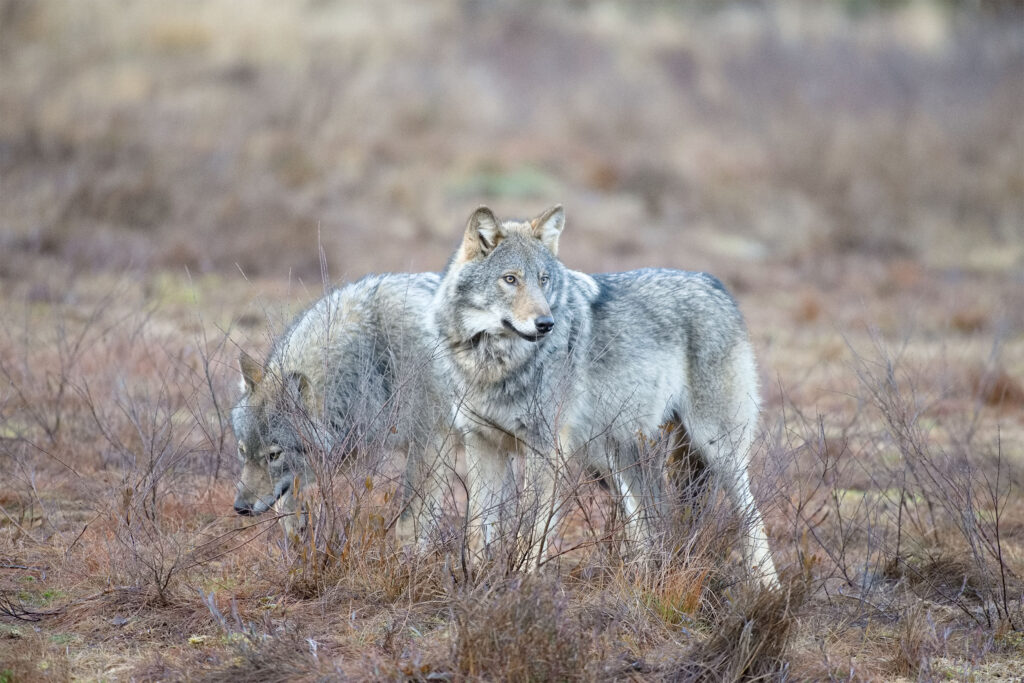
The swedish government is not skimping on funds when it comes to reducing the wolf population to a record low and scientifically questionable number of only 170 individuals. Over the next three years, more than 338 million Swedish kronor will be spent on minimising the wolf population. In other respects, however, the government is stingy with investments in nature and the environment. The environmental budget has been cut by four billion since the government took office in 2022, and the reduction is even greater in practice when inflation is taken into account.
The future of wolves in Sweden is, of course, not just about money. As a large predator, it has an obvious and important place in our natural environment. But when the government does not share this view, and instead sees the wolf as a problem, how the money is used becomes important.
The government wants to reduce the number of wolves to 170 individuals, and the Swedish Environmental Protection Agency (Naturvårdsverket) has reported to the EU on behalf of the government that the favourable conservation status for wolves in Sweden has been lowered from 300 to 170 individuals. This is a paradox because the Swedish Environmental Protection Agency, in a study commissioned by the government, has concluded that this is not possible.
338 million to reduce the wolf population
Despite this, the government is moving forward with its project and will invest just over 338 million between 2026 and 2028 to achieve its goal. In the first year, the allocation will be 81.3 million, increasing to 124.9 million in 2027 and 132.1 million in 2028. If the wolf population is reduced from the current level of around 355 to 170, i.e. by 85 wolves, the cost will be 4 million per wolf.
This can be compared, for example, to the government increasing the allocation to national parks and nature reserves by a modest 50 million per year during 2026–2028, and spending the same amount of money during the same period to upgrade hiking trails in Sweden. After the severe cuts made earlier, this amounts to only half of the total appropriation during the previous term of office.
The 81.3 million Swedish kronor that will be used to reduce the wolf population in 2026 can also be compared to the fact that 30 non-profit environmental organisations received only 9 million Swedish kronor to share in 2025, a decrease from 19 million in 2024. Of these, the Swedish Predator Association received just over 300,000 Swedish kronor. The Swedish Hunters’ Association received approximately 47 million in operational and organisational grants for all of its activities in 2025.
Artificial respiration
Since the wolf population cannot develop naturally if it is culled as heavily as the government wants, some form of artificial respiration is necessary. For example, wolves need to be inventoried in a completely different way than they are today. In principle, every single individual must be mapped and DNA-tested, something that the county administrative boards, which are responsible for carrying out the work, question in many places as to whether it is even possible.
The Swedish wolf population suffers greatly from inbreeding, and the smaller it becomes, the more important each individual that can contribute new genes becomes. This applies, for example, to wolves that have migrated from Finland and managed to make their way through the reindeer grazing area without being shot during protective hunting. Their pups should also preferably not be hunted. The idea is therefore that they too should be monitored at a completely different level than today.
Uncertain wolf relocations cost up to 15 million per wolf
The government also wants to go so far as to spend money on relocating genetically important wolves. Several county administrative boards are wondering how this will work and are questioning whether it is even possible. This is partly because a wolf does not necessarily stay in the place it is relocated to, but can wander many miles away, often back to where it was relocated from. It is also because it is very difficult to gain public acceptance for relocated wolves.
Relocating wolves is also very expensive. The Swedish Environmental Protection Agency estimates that it can cost up to SEK 14–15 million to relocate a single wolf.
Invest money in prevention and acceptance instead
Sweden needs a viable wolf population, and the 338 million could help achieve this if it were invested differently. Namely, in increasing acceptance and understanding of wolves, in preventive measures such as predator-repellent fences, and, for example, in increasing compensation for people who suffer damage to domestic animals caused by wolves.
Perhaps the support for the 30 non-profit environmental organisations that had their funding cut from 19 to 9 million in 2025 could also be restored. Skipping one single wolf relocation could save between 14 and 15 million.
Bosse Johansson, photo Günter Lenhardt